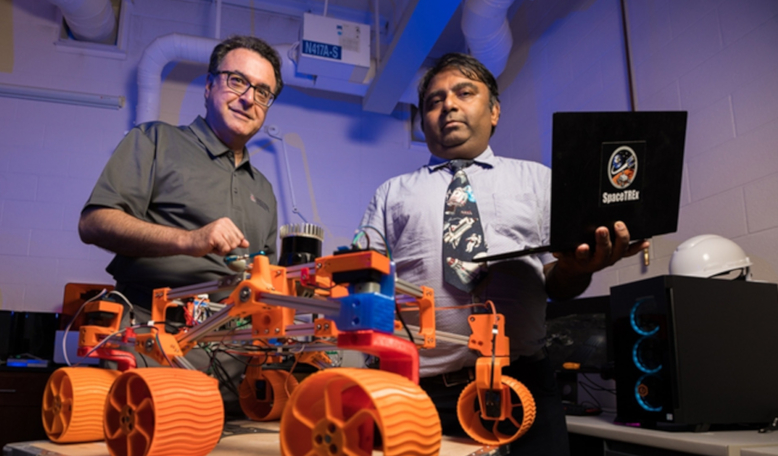NASA is funding a new project that uses swarms of autonomous robots to mine for rare-Earth elements and other lunar material on the moon.
Led by researchers at the University of Arizona, the team are developing a neuromorphic learning architecture technique, called the Human and Explainable Autonomous Robotic System, or HEART.
As the name suggests, neuromorphic computing uses a model that's inspired by the workings of the brain, and is a practise that uses significantly less energy than a conventional computer chip.
Most hardware today is based on the von Neumann architecture, which separates out memory and computing.
But because chips of this type have to shuttle information back and forth between the memory and CPU, they waste time, so to compensate, more chips are added to the circuit to make them faster.
Neuromorphic computing on the other hand models the way the brain works through “spiking” neural networks that can convey information in both the same temporal and spatial way as the brain can and so produces more than one of two outputs.
The HEART system not only will train robots to work together on mining, excavation and even building tasks, but it will also allow the robots to improve their collaboration skills over time.
"It's really exciting to be at the forefront of a new field," said Moe Momayez, interim head of the Department of Mining and Geological Engineering at Arizona.
Momayez’s colleague, Jekan Thanga, an associate professor of aerospace and mechanical engineering, is the lead on HEART and he is adapting the neuromorphic learning architecture technique to fit on a new generation of miniature sensors that will one day drive the autonomous robots.
To test the design, the team have created low-cost, rapidly designed, 3D-printed rover prototypes that when perfected, could assist astronauts on the moon with laborious mining tasks.
"The idea is to have the robots build, set things up and do all the dirty, boring, dangerous stuff, so the astronauts can do the more interesting stuff," Thanga said.
The team plan to build and train the robots here on Earth, so they can practice before heading to the Moon. Ultimately, the researchers envision a fully autonomous swarm of robots that doesn't need to receive instructions from Earth to mine materials and construct simple structures.
“By going through this process, we help perfect these artificial creatures whose job it is to do the mining tasks,” Thanga said.
While Thanga concentrates on the autonomy side, excavation of materials is being handled by Momayez.
Instead of the robot drilling through the rock to extract ore, Momayez has developed an electrochemical process to drill through rock five times faster than any other method.
As efficient as it is, lunar mining still presents a challenge.
"Here on Earth, we have an unlimited amount of energy to throw at breaking rocks," Momayez said. "On the moon, you have to be a lot more conservative. For example, to break rocks, we use a lot of water, and that's something we won't have on the moon. So, we need new processes, new techniques. The most efficient way to break rocks on Earth is through blasting, and nobody has ever set off a blast on the moon."
The duo’s work has attracted funding to the tune of $500,000 from NASA, part of which will be used to train students in space mining. One of the reasons Momayez and Thenga decided to pursue this venture is the keenness shown by undergraduate students.
"Every time I got out and talk about space exploration, there's really a storm of students who are enthusiastic about mining," Thanga said. "Seeing all these students inspired to get involved has been a big drive."
Students will learn about both autonomous robot swarms and excavation techniques - in the classroom, in the laboratory and even in the university's student-run San Xavier Mine.
"They can test their robots at the mine, they can excavate, they can drill, they can blast," Momayez said. "And with the establishment of the new School of Mining and Mineral Resources, we hope to get more students from all over the world involved in mining."











